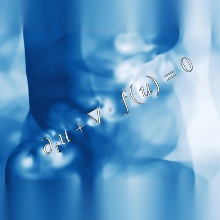Directly to
Team
Principal Investigators:
- Michael Herty,
RWTH Aachen - Siegfried Müller,
RWTH Aachen
Project staff:
- Niklas Kolbe
Abstract
Coupling of models on different scales has been ubiquitous in the mathematical modeling of real–world phenomena with a prominent example being the earth system models where relevant aspects of the Earth system on different scales are simulated and necessarily needed to be coupled for a complete description of the process. Due to the increasing complexity of the compartmental models the coupling procedure itself poses major challenges analytically as well as numerically. A suitable method should ensure that relevant properties are conserved across models and scales and an efficient numerical computation should be possible to allow for real–time simulations.
Although the coupling of systems of balance laws has been successfully conducted in the past, they suffer from short-comings. A bulk of work has been performed in the one–dimensional case in the past decades in the context of networked problems for various fields, where a key concept in the development of analytical and numerical results has been the notion of Riemann solvers or half–Riemann problems at the coupling interface. The developed techniques require the analytical expression of the nonlinear wave curves which in many relevant models might not be explicitly available. This severely limits the use of those techniques. The developments have also been mirrored in numerical schemes that in almost all literature relies on the Riemann–solver at the coupling point safe for some exceptions, they, however, do not translate to the relevant multi–scale case. Also, property preserving numerical methods for the coupling at the same scale are not available. Multi–dimensional extensions have so far been addressed by projection of the flux in normal direction leading to formally one–dimensional systems. Finally, the question of the coupling across scales has very recently gained interest but a general methodological approach and corresponding property preserving methods are still at large.
The aim of this project is to develop numerical schemes for multi–scale coupled problems arising in nonlinear fluid dynamics. More specifically, we aim to develop schemes that do not rely on Riemann solvers at the coupling interface and allow for the extension to multi–scale and, with the perspective of turbulent flow, towards multi–dimensional settings. The development of the scheme is accompanied by theoretical analysis on its properties as well as an implementation for different scenarios described by (multi–dimensional) systems of hyperbolic balance laws and/or transport–dominated problems exhibiting multiple scales. We exemplify the developed, numerical method on systems of gas dynamics and a transpiration cooling problem. For this purpose, we first derive a relaxation approach for coupled transport problems relying on one relaxation parameter. This is followed by the investigation of
extended properties of the relaxation systems with different relaxation velocities. Finally, the developed techniques are are applied to different scenarios of multi–scale coupling.


